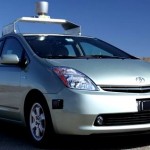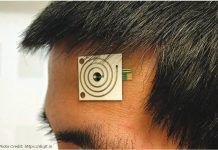 Almost last year, Google stunned the entire world with the announcement that it was working on a self-driving car.
Almost last year, Google stunned the entire world with the announcement that it was working on a self-driving car.
The most shocking wasn’t that the company was working on such a system, but that it had been testing the system with a fleet of prototypes, logging 140,000 on public roads. For sure these cars were manned, but Google maintains that its software was generally able to handle the routes it was presented with without much human intervention: “Our automated cars, manned by trained operators, just drove from our Mountain View campus to our Santa Monica office and on to Hollywood Boulevard. They’ve driven down Lombard Street, crossed the Golden Gate bridge, navigated the Pacific Coast Highway, and even made it all the way around Lake Tahoe.”
Google hasn’t really shown us much of what this self-driving car is capable on the road until now when thanks to Danny Sullivan at SearchEngineLand.com we can see the system from both outside and inside a demo self-driving car. This particular course was designed for aggressive driving and the engineers from Google instructed the self-driving car to drive accordingly. This may not seem like the best way to assuage peoples’ immediate and visceral worries about the self-driving car; predictably, the video about self-driving car has already spawned countless jokes in comment sections around the internet.
It’s hard to imagine a near-future scenario in which cars are allow to truly drive themselves; issues of safety and liability abound, and even constructing a practical–not to mention legal–framework for active driving assistance will not be a fast or easy process. The application of such technology in less conspicuous role is much easier to imagine.
Various computer-aided accident prevention features have been included in luxury cars for years now. The software developed by Google includes sophisticated methods for avoiding collisions, many of which could conceivably be utilized in cars that are primarily human-controlled. Aggressive driving as seen in the above video could be employed in a defensive capacity, with reaction speeds and decision-making clarity that a human operator might lack. This could serve as the first step in the increasingly inevitable march forward for each self-driving car.
The software developed by Google as an incremental outgrowth of the cruise control systems built into nearly every car on the road today. This is the vision that Google seems to have promoted and cultivated so far, and will serve them better in their long-term goal of actually helping bring a fully self-driving car to market.
It’s so nice to see that the self-driving car of the future has some driving chops.



